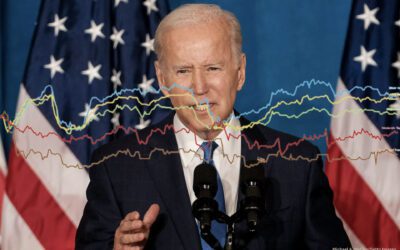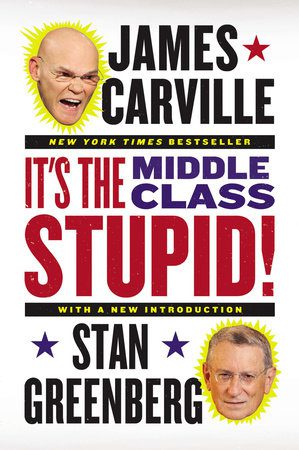The latest national survey by Greenberg Quinlan Rosner for Democracy Corps and Women’s Voices. Women Vote Action Fund shows a Republican Party in deepening trouble and emerging underlying trends that may have shifted the balance for 2012.[1]
Barring sudden economic shocks, there is accumulating evidence that we have entered a new phase in the political cycle, substantially more favorable to the Democrats. This survey sees a collapse of the Republican brand at almost all levels. Negatives associated with the Republican Party have not been this high since right after they lost the country in 2008. Their presumptive nominee flirts with a 50 percent negative rating and may now represent a big drag on the national party.
President Obama nears the 50 percent mark and is now just four points away from what he achieved in 2008. Democrats have newly consolidated the progressive voters of the Rising American Electorate who were responsible for Democratic victories in 2006 and 2008. These voters–“unmarried women, young voters, and minorities—”dropped off in 2010 and lagged throughout 2011. They have returned in a big way for Democrats, led by a resurgence and re-engagement of unmarried women. Only young voters have not been re-consolidated, which is either a problem or an opportunity. Seniors, who abandoned Democrats in 2010, have come back two surveys in a row and suburban swing voters watch the Republican primary debate with growing alienation from the Republican Party.
The tax issue, a presumptive Republican advantage, has moved dramatically in favor of the Democrats. These results may not simply be the result of a spot of good economic news and rough news cycles for Republican nominees, but the beginning of long-term structural changes that will characterize the 2012 election cycle. Recent controversies over Planned Parenthood and contraception will not revive the Republican’s standing, indeed, the opposite may be true, as this survey shows voters disagree with them on principle and wonder why at a time of great economic distress, Republicans are consumed with denying birth control coverage for women. This survey provides fair warning to the Republican Party that they may be losing the country.
- The Republican brand is in a state of collapse – over 50 percent of voters give the Republican Party a cool, negative rating. The presidential race and the congressional battles are interacting with each other to drive down their lead candidate, the party, and perceptions of the congressional Republicans.
- Romney may be on the edge of political death. The shift against him is one of the biggest in the polls and he now competes with Republicans in Congress for unpopularity. In the summer of 1996, Bob Dole essentially was disqualified in voters’ eyes and never really recovered his footing.
- President Obama is now at the critical 50 percent mark on approval and is approaching 50 percent on the ballot. More people view him favorably than negatively, creating a different climate at the top where Obama is not that far from the 53 percent he took in 2008.
- On the named Congressional ballot, Democrats continue to lead Republicans, with consolidated support among the coalition that brought them to power in 2006 and 2008. Importantly, they are now also performing equal to or better than their 2008 margins among seniors.
- Importantly, Democrats have consolidated the new progressive voters of the Rising American Electorate who were responsible for Democratic victories in 2006 and 2008. These voters – unmarried women, young voters, and minorities – dropped off in 2010 and lagged throughout 2011. These voters have returned in a big way for Democrats, led by a resurgence and re-engagement of unmarried women.
- A drop in negative feelings about the direction of the country and the economy are major and are shaping the mood going into 2012. While Democrats have not made gains on who voters trust on the economy, the climate is better.
These changes are big and could become fundamental to the still young election year. Two big issues may have shaped this period. One is taxes and the other is the debate over the church and contraception, which is discussed at length later. The shifting debate on taxes is one of the biggest things that has happened here. On every other issue we track, voters’ minds have not changed on which party is better”–except taxes”–where we have seen a 10-point shift in favor of Democrats. The tax debate is shifting heavily against the Republicans.

The Collapsing Republican brand
When voters look at the Republicans, they see a party that is not ready to lead. The Republican brand has collapsed over the last year; both Republicans in Congress and the major contenders for the Republican nomination see rising negatives.
- The percentage of voters who identify as Democrats has increased 7 points since November to 39 percent. This is driven by a consolidation of the Rising American Electorate – among whom strong Democratic Party identification has increased 5 points in the last month alone.
- Half of all voters now give the Republican Party a negative rating. The shift is driven dramatically by seniors – 54 percent of whom now give the Republican Party a cool, negative rating (40 percent very cool). Critically, half of all independents (52 percent) give the Republican Party a cool, negative rating. The last time the Republicans saw numbers this bad was right after they lost the country in the 2008 election.
- More than two-thirds (68 percent) of voters disapprove of the Republicans in Congress – a staggering 22-point increase since last year at this time. Among seniors, the change is striking. Last year at this time, Republicans in Congress enjoyed marginal approval among seniors (45 to 43 percent). Today, two-thirds of seniors now disapprove and just 28 percent approve of the Republicans in Congress. Independents, too, have turned against this Republican Congress. Last year at this time, just 45 percent of independents disapproved of the Republicans in Congress – today 71 percent register their disapproval.
- We have also found dramatic movement among suburban voters, who have moved sharply against Republicans and are now consolidated in the Democratic camp; 60 percent of suburban voters now identify as Democrats or Democratic-leaning independents compared to just 33 percent who identify as Republicans or Republican-leaning independents.
- Democrats hold a lead in the named Congressional ballot (47 to 45 percent) – and are ahead in both our January and February polls. Among seniors, who were essential to the Republican rout in 2010, the margin has now closed to just 2 points, an 8-point net improvement for Democrats since last month.
The “None of the Above” Republican Field
Republicans do not have a viable candidate. Despite defeating nearly all of the anyone-but-Romneys, the Republican front-runner has failed to win voters. Indeed, Romney is in sharp decline. Nearly half of all voters (47 percent) now give Mitt Romney a cool, negative rating on our thermometer scale and nearly a third (32 percent) give him a very negative rating–”up 7 points since last month. Mitt Romney is even unpopular among his own partisans; less than half of all self-identified Republicans give him a positive rating. Half of independents now give him a negative rating. Romney’s current standing is decidedly worse than where McCain landed at the close of the 2008 cycle and approaching where George Bush concluded his presidency.
As poorly as he is performing, Romney’s challenger-of-the-month, Rick Santorum, does not fare much better. More voters give Santorum negative ratings than positive (38 to 29 percent) and his average rating is stuck well below 50 at a dismal 45. Less than a third of independents (32 percent) and just over half of Republicans (54 percent) give Santorum a favorable rating. In a split exercise, we asked voters what issues they are hearing the Presidential candidates talk about and what voters believe these candidates should be talking about. A 56 percent majority have heard Santorum talk about the social issues and just 49 percent have heard him talk about the economy. However, 73 percent believe he should be talking about the economy and just 35 percent believe he should be talking about social issues.
Major Change at the Presidential Ballot
President Obama now holds a 49 percent to 45 percent advantage over Mitt Romney, up from 48 to 47 percent last month. He is very close to what he needs to win reelection and just four points shy of 2008. His support is deeper too; in our proprietary Voter Choice Scale, solid support for the President is up 5 points since last month. Most of the gains the President sees on this measure are driven by voters in the Rising American Electorate–”unmarried women, younger voters, and minorities.
In fact, among voters outside the Rising American Electorate, Obama’s support is static. The biggest story here is unmarried women. President Obama now leads Romney among unmarried women by a margin of 65 to 30 percent, up from 54 percent Obama, 37 percent Romney at the end of last year.
These voters are approaching the same level of support (70 percent) they showed the President in the 2008 elections. Conversely, married women support the Republican by a 9-point margin, leaving a 44-point marriage gap. Younger voters, however, remain aloof from the President (55 to 43 percent) and Hispanics, among whom the President now holds a 16-point margin, are also withholding support compared to 2008, when he won Hispanics by a 36-point margin. There is still room for Obama to grow support among RAE voters.
Reigniting Culture War Unlikely to Revive Republican Chances
Recent controversies over the initial decision by the Susan G. Komen Foundation to withdraw funding from Planned Parenthood and coverage of contraception under the Department of Health and Human Services (HHS) rules have rekindled issues long-dormant in this political climate where the economy dominated the debate. This new narrative will not improve Republican chances – and may help Democrats with women and suburban voters.
First, Planned Parenthood enjoys a solid brand among voters (50 percent positive and only 32 percent negative on the thermometer rating) and is actually more popular than the NRA (44 percent warm, 32 percent cool), as voters seem to prefer pills to bullets.
Second, a good plurality of 49 percent agree with the president’s decision to require Catholic hospitals and universities, which provide health coverage for employees and employ people of different faiths, to purchase policies that cover the cost of contraception. That is true for all likely voters, as well as Catholics, and the margin exceeds that of his overall vote – despite the fact that the health care reform law is not yet popular with voters. The president is winning the argument, as you see below, even when it is cast in the context of religious freedom. As many Republicans and the Catholic bishops push to end the mandate for preventive health benefits, this issue will not be helpful to them.
More broadly, voters may wonder why the Republicans are consumed with pushing back health coverage for women rather than continuing to focus on the economy, spending and debt. We may yet look back on this debate and wonder whether this was a Terry Schiavo moment. The Obama position finds a two-thirds majority among suburban voters and a 61 percent majority among single women. These results loom large when voters prefer Democrats over Republicans by 52 to 26 percent on women’s issues, including a 36-point margin among senior women and a 47-point margin among unmarried women.
Conclusion
Obama and Democrats lost the country in 2010 and many disillusioned voters were ready to give the Republicans a chance and were very open to new presidential options.[2] Instead, they see a party and leaders determined to stop President Obama rather than work with him, stuck in an anti-tax mantra with few economic ideas, seemingly hostile to the middle class and aligned with the 1 percent and, more recently, obsessed over social issues when the economy still looms as the biggest problem. That performance, coupled with an improving economic mood in the country, may be locking in perceptions that may be hard to unlock over the summer and fall.

[1] This memo is based on a survey of 1000 likely 2012 voters nationwide conducted by Greenberg Quinlan Rosner for Democracy Corps and Women’s Voices. Women Vote Action Fund from February 11-14, 2012. Unless otherwise noted, the margin of error is +/- 3.1 percentage points at 95 percent confidence.
[2] Based on findings from eight focus groups conducted by Greenberg Quinlan Rosner for Democracy Corps and the Voter Participation Center in Bala Cynwyd, PA on August 9, in Chicago, IL on August 10, in Sacramento, CA on August 17, 2011, and in Raleigh, NC on October 5, 2011. For more on this, please see our report on “Seizing the New Progressive Common Ground.”




